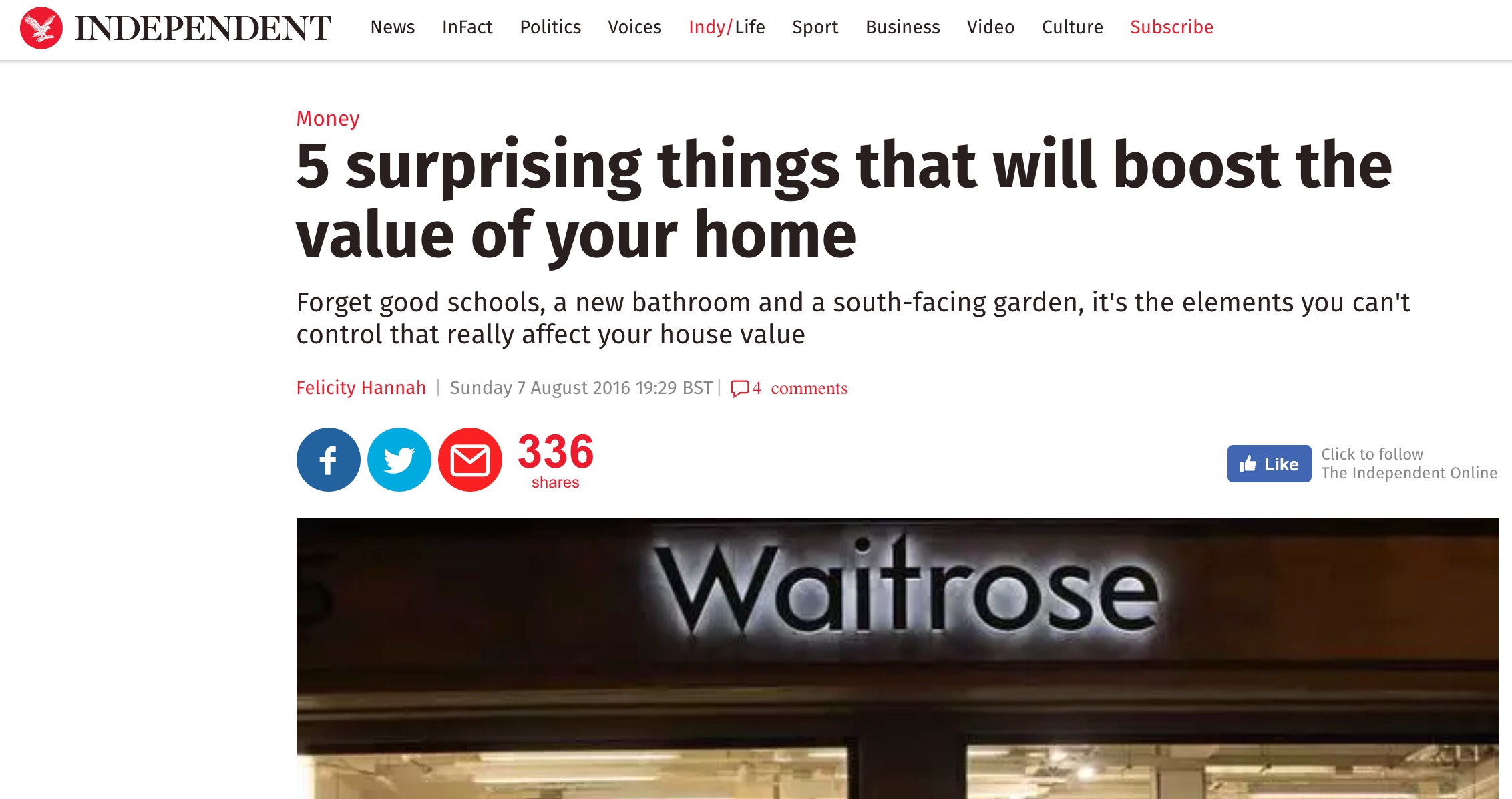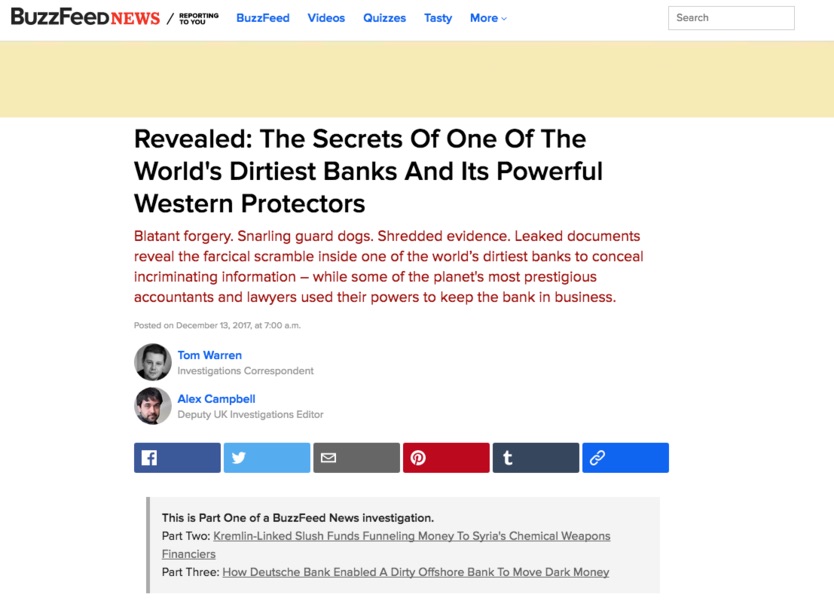It’s been on your screen today and you can’t resist it.
That primal urge to find out “8 things about garden peas that will shock you.”
You click on that irresistible headline only to be greeted by a terrible UX and thin content.
If you’re feeling underwhelmed, then congrats. You’ve probably experienced clickbait.
Clickbait, in the broadest sense, is defined as an attractive title that does not deliver on the content.
It’s the snappy dresser who has no conversation skills.
It’s equal to intellectual fast food or the lowest form of trickery worthy of digital magic.
We’re self-aware of the sham at work, but still fall for it because we enjoy the escapism.
There is a savior in all of this that can help us rid the scourge of clickbait. A weapon that all sites have at their disposal.
It’s long-form content.
When I mean long-form content, it’s content-rich assets that fulfill a user intent.
This is a long way off and the web is in a constant period of transition, molded by the collective. But, where are we now and where are we going?
Welcome to clickbait hell.
What is the Purpose of Clickbait?
So how did we get here?
SEO resources of the past decade have led us to believe that the internet would be a nirvana of content-rich pages.
How did clickbait become one of the most unexpected language and publishing trends of past decade?
The websites on which clickbait appeared tended to be nothing but these kinds of disposable, over-emotive articles.
No one could be searching for these on Google, which begs the question: how and why do they even exist in the first place?
Traffic is important the important factor here, as it contributes to selling advertising.
The quest to get those all-important page views has done great things in reviving fading arts such as journalism. However, it has also propped-up online advertising for the past decade or more.
If clickbait has proved to be a particularly effective – and a simpler means – of getting page views, then that also means it is an easier way of generating advertising revenue. Which explains why so many sites are now out there competing for our emotions.
But, outside of advertising, clickbait does not necessarily lead to conversions.
Conversions happen when you best match the user’s intent.
If the user is unfulfilled by the content then that is not going to lead to them responding to a CTA. Unless your call to action is a complaints form…
The Psychology of Clickbait
At the moment, we’re in a state of limbo – and two broad schools of online usage stand before us.
When we’re on the prowl for content, the intent is that we’re looking to find out information.
We’re seeking information.
We’re browsing for entertainment.
On one hand, we’re looking to feed ourselves, while on the other we’re looking to be fed. When we want to feed ourselves, it requires a mental participation.
Being fed, however, is a type of blind consumerism.
You might say we look to be fed so we can one day feed ourselves. Yet, clickbait offers poor nutrition.
Online publishers first tap into those different states of mind with headlines.
For the click-baiters, it’s trying to seduce us into the click with sexy-as-hell headlines.
Near all clickbait articles follow the same format to draw us in.
Our Lust for Lists
What is it about clickbait that actually works?
Why do we keep clicking on those headlines?
The psychology of clickbait remains fascinating.
It should be something that all copywriters think about at some stage, to see what lessons can be learned.
The format of clickbait is not the problem. It’s the fact that the structure allows click-baiters to easily create poor content.
Some of these traits and types of language that clickbait uses help us to better define it:
- Headlines are created to manipulate. We’re moving on from grabbing your attention like old-school ad copy, or even sexing up your calls-to-action. In fact, research has shown that emotions that are more extreme within headlines tend to be more popular. Why wouldn’t you take this on board when creating copy?
- Making things easy. The articles themselves are short, image-rich, and contain simple statements. For passive online reading, this is ideal. Sometimes we only have to skim through a selection of cute animals.
- They often use lists – 5 ways, 10 things. Numbers stand out against letters and set the expectation of how complex or lengthy a piece of content might be. This makes for a simple online experience.
- But they all tend to mislead at worst, or over-promise at best. Sometimes the articles couldn’t meet the expectations of the headline. Will a cat video save our life? Unlikely. Yet you can be quite creative with your tone of voice. A cat video won’t save your life, but the fact that you started reading plays into a cynical humor. This then might be fantastic for targeting a certain demographic, like 18- to 30-year-olds.
Let’s compare that with what we’re all taught about good, long-form content.
- Headlines should be created for relevancy. They should inform the reader about the information they’re going to read. This is something that search engines love, too.
- Articles should be long – and, depending on the competitiveness of the subject matter, can end up being many thousands of words. They’re well-structured, with plenty of headings, but they’re still often image-rich. The idea is that the reader gets the payoff – the information that they were looking for – at some point within a good long-form article.
- With regards to lists, headings should divide up long-form content like chapters in a book, if you think of content as a story with a three-act structure: setup, confrontation, and resolution.
- The content always delivers on what it promises. Even if you didn’t get it straight away.
Blurred Lines
Wouldn’t it be nice if we could continue to dissect these different semantic techniques?
As mentioned before this world of different styles is beginning to blur.
Clickbait in its proper definition is becoming harder to pinpoint.
Major publications and news outlets are beginning to change their article styles.
In fact, the Independent in the UK recently went digital only, with the intent of getting ahead and freeing itself from the confines of print. It has since spawned numerous criticisms from readers.
It’s argued that the main problem for the Independent is the type of stories that they’re now publishing, which goes back to how easy it uses the clickbait formula for poor content.

If online advertising is your main driver, then you’re beholden to page views being a key metric.
Learning from the clickbait writers is going to be unavoidable for such publications.
But these were our tools, to begin with. We shouldn’t be afraid to use them.
A curious juxtaposition is that we’ve seen sites such as BuzzFeed which were once a haven for clickbait creators have become more serious, especially when it comes to producing quality journalism.
They have invested in building a quality investigative team under the banner of BuzzFeed News.
Look at their investigation in 2016 into How Trump Tried to Get Qaddafi’s Cash.
They even received their first Pulitzer citation.

Clickbait has taught us all about what people like online, what their emotional triggers are.
Search engines show what users actually want.
In a sense, then, long-form content isn’t so much saving us from clickbait.
Clickbait is saving us from content that lacks humanity.
And there’s a lot that long-form writers can learn from clickbait.
Algorithms vs. Clickbait
Writing for algorithms – or writing like robots that are writing for users – rewards what, exactly?
To look at this we need to see how clickbait is distributed.
There are two broad spectrums of how clickbait is sorted:
- On social media, it’s whatever is most liked, tagged, retweeted, shared and commented. So, engagement with the content is key.
- With search engines, it’s all about what is most relevant to the user.
It’s no surprise then that social media is a prime breeding ground for clickbait.
Put this side-by-side, with a study last year that found 60 percent of people share content without even reading it.
I’d argue that most sharing is like an exercise in PR. You want to feed to other people your ideological alignment as a method of showing off.
But, surely the aspect about clickbait is that it’s cheap and low quality.
How did clickbait then appear frequently in Facebook news feeds?
This may be connected to the above point that people are merely sharing articles without necessarily reading them – and that it’s connected to the emotive headlines or showing-off to our friends on our timeline.
Another factor may be that the kinds of articles that are clickbait are often tailored to certain demographics – bright and engaging video content, perfectly digestible for a younger, more modern audience.
It should be said that Facebook has made clear algorithmic changes to reduce clickbait headlines, as it must perceive this low-value content to be a threat to users’ continuing engagement with the platform. And Facebook needs that continuing engagement to function properly in the long run.
For SEO connoisseurs, content, as we’ve said, is more about providing the most relevant headline – side-by-side optimization based on a searcher’s intent.
Where clickbait goes wrong is it does not fulfill user intent.
But, here are few ways in which clickbait also fails on the SERP:
CTR is High, and so is Bounce Rate
If you’ve managed to capture a user from the SERP and then introduced them to a poor interface (i.e. optimized for ads, not for humans) then the bounce rate is going to be high.
This also sounds like you’ve written for the robots, which Google hates.
Content should be a happy medium between creativity and simplicity.
Google Despises Low-Quality Content
Google’s search quality guidelines define low quality as:
Low quality pages are unsatisfying or lacking in some element that prevents them from achieving their purpose well. These pages lack expertise or are not very trustworthy/authoritative for the purpose of the page.
Sound like clickbait, doesn’t it?
Does Clickbait Earn Links?
After content and links are the two most important ranking factors, does clickbait get links?
I’d argue it wouldn’t, as it doesn’t tend to lean heavily on being resource rich – and therefore it’s not very useful to others.
It’s far less likely someone gleaned any information from it worthy of a link.
So we checked a couple.
This classic piece of literature on “Most Awkward Background Fails in Bathroom [sic]” surprisingly yields nothing in the way of links. It’s hardly worthy of a link either, as it seems like it’s created for algorithms to sell advertising – but note the headline of “award” and “fails”.

And want to know how old these celebrities really are? It turns out not many others did either…

Clickbait Heaven? Or an Ode to Clickbait
In a perfect utopia, the web would be the ultimate heaven for resources. A pantheon of knowledge to excel us beyond our earthly means.
Sounds awfully boring, doesn’t it?
So, in short, I’ve not really come to save anyone from a clickbait hell.
I’ve decided to embrace clickbait – or at least take on board some of the lessons that it teaches us.
Embrace those emotive headlines.
Give three cheers for endless lists.
Let’s celebrate humanity in our content.
4 Key Takeaways
Here are four clickbait learnings for your long-form content:
- Humanize your work. What do I mean by that? One of the things that distinguishes ourselves (so far) from robots is the ability to show emotions – genuine emotions. Have a look at Robert Plutchik’s Wheel of Emotions to get an idea of people’s states of mind, so you can create content that caters more for readers’ emotions rather than ignore that people are, well, people.
- Make things easy for people. I’m sure it’s great that you’ve written that novel as an article, perhaps a Jack Kerouac-inspired stream of consciousness – but if people find your long-form content too impenetrable, then they’re not going to engage. They won’t stay long on your site. And they’ll close their browser window.
- Get a good headline that’s likely to entice. No matter how detailed your post, you can always get more readers with a headline that means something, or gets someone’s mind ticking over. Just don’t forget to keep things optimized for keywords and the likes at the same time – that’s the real art. (You might want to reference that emotions wheel too.)
- Use lists! Maybe the internet has a few too many “7 great things” posts, but they clearly work. They give people an expectation and they focus your content on the bare essentials.
Image Credits
Screenshots taken by author, February 2018





